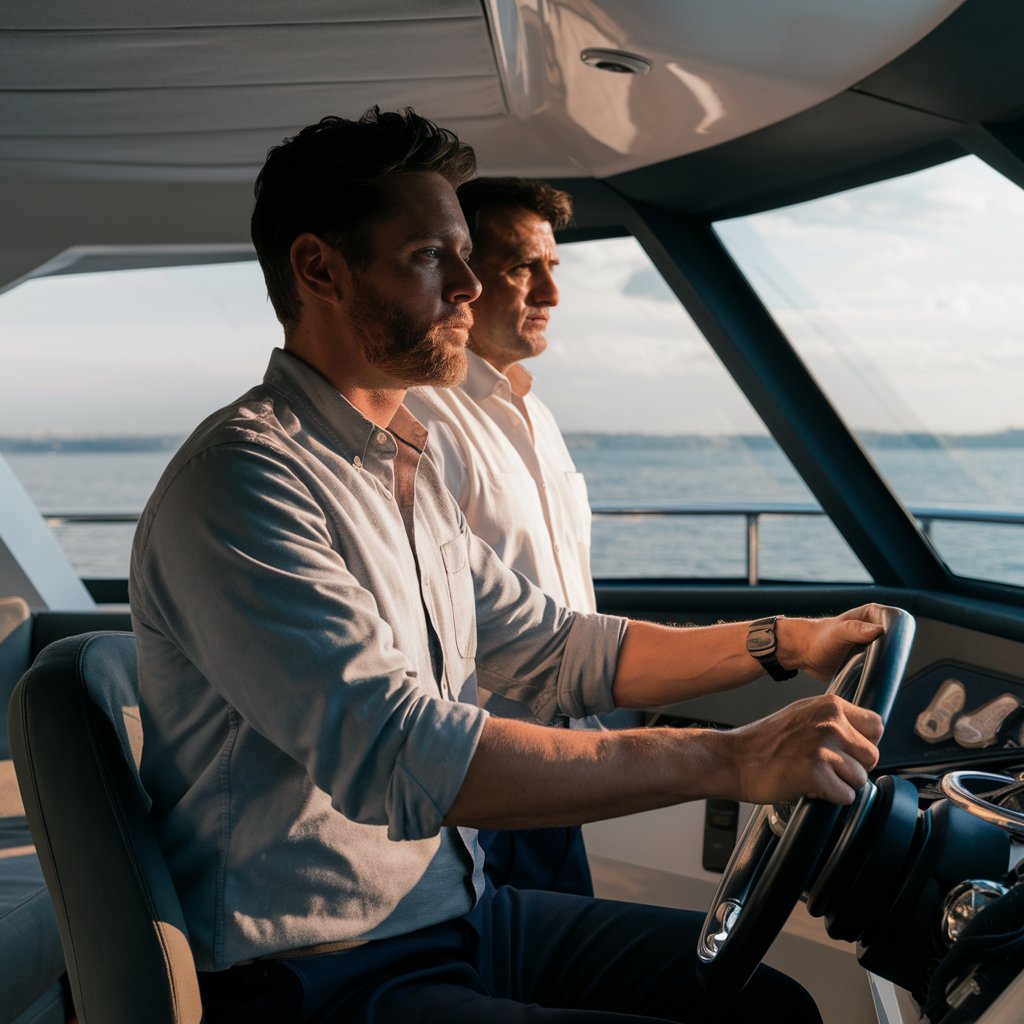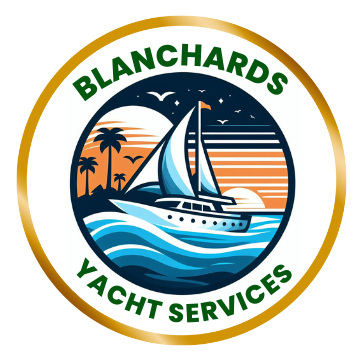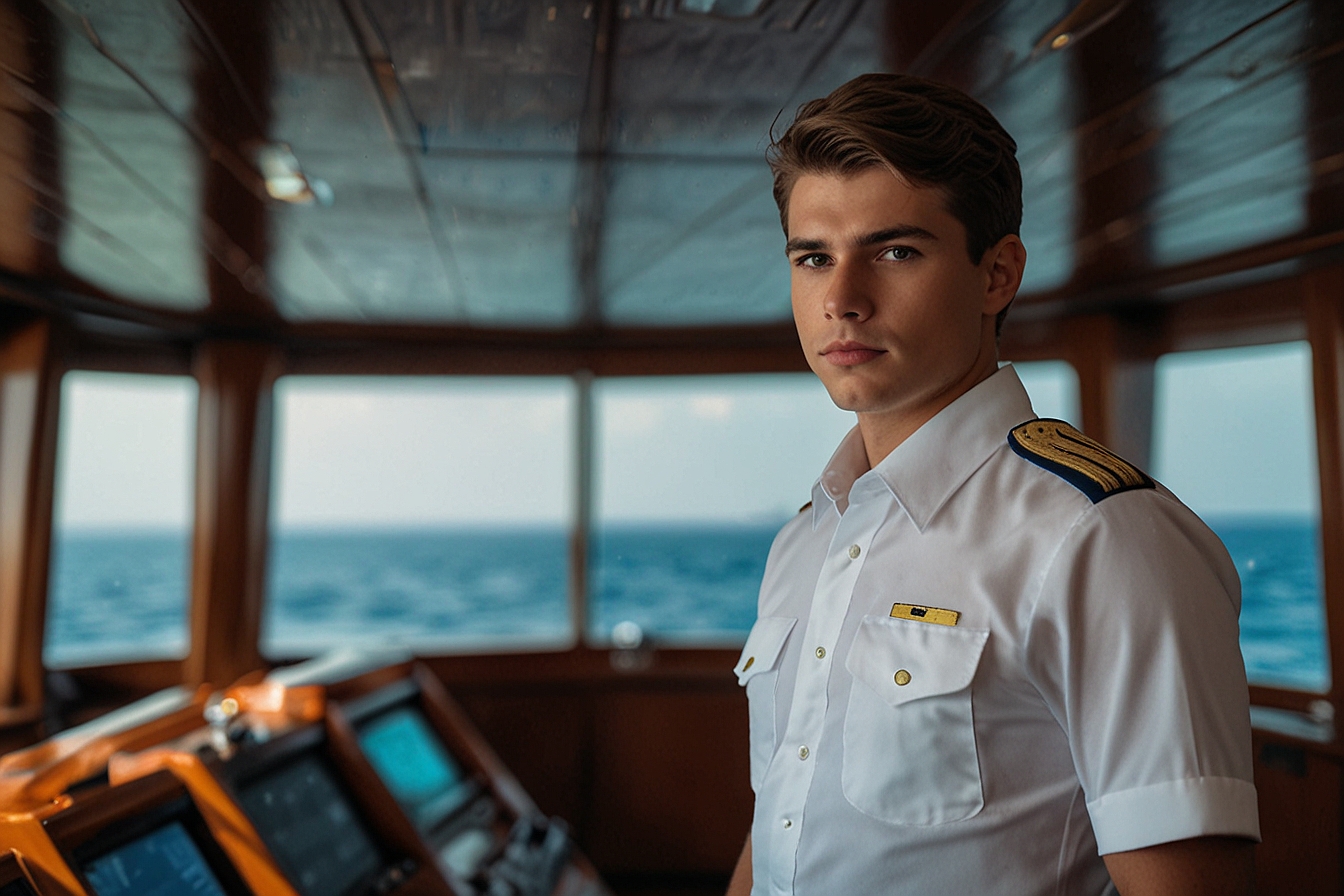Series: ”Behind the Scenes”
Introduction
Setting foot on the polished expanse of the yacht’s deck, is the ever-attentive eyes of the yacht’s Chief Officer. As the second-in-command and trusted right-hand to the Captain, the chief officer also known as the First Mate, is responsible for ensuring that every aspect of the yacht’s operation runs like clockwork.
This position requires a blend of leadership, technical knowledge, and hands-on skills, making it one of the most challenging and rewarding roles on board any yacht. In this blog post, we will delve into the various responsibilities and duties that define the role of a Chief Officer.
Key Responsibilities
1. Navigation and Safety
The Chief Officer is primarily responsible for the safe navigation of the yacht. This includes planning routes, monitoring weather conditions, and ensuring that all navigation equipment is functioning correctly. They must be well-versed in maritime laws and regulations to ensure compliance and safety.
- Route Planning: Creating detailed voyage plans, considering Weather Forecasts, tidal information, and navigational hazards.
- Safety Drills: Conducting regular safety drills and ensuring that all crew members are familiar with emergency procedures.
- Watchkeeping: Overseeing watchkeeping duties to maintain a constant lookout and ensure the yacht’s safe operation.
First Officer Inputting Route Data to Ensure Safe Navigation.

2. Crew Management
A Chief Officer acts as a bridge between the Captain and the Crew, ensuring effective communication and a cohesive working environment. They are often responsible for the recruitment, training, and management of the deck crew.
- Training: Providing ongoing training to the deck crew on safety procedures, maintenance tasks, and operational protocols.
- Scheduling: Creating work schedules and watch rotations to ensure that the crew is well-rested and the yacht is adequately manned at all times.
- Conflict Resolution: Addressing any Interpersonal Issues among the crew and maintaining a positive and professional atmosphere on board.
3. Maintenance and Operations
The Chief Officer oversees the maintenance of the yacht’s exterior and deck equipment. This involves routine inspections, managing repairs, and ensuring that all deck operations are carried out safely and efficiently.
First Officer Inspecting Yacht Maintenance Assignments with the Crew

- Inspections: Conducting regular inspections of the yacht’s hull, deck, and equipment to identify any maintenance needs.
- Repairs: Coordinating with the Chief Engineer and technicians to address any technical issues or repairs.
- Inventory Management: Keeping track of inventory, including safety equipment, tools, and supplies necessary for the yacht’s operation.
4. Guest Relations
While the Captain is typically the primary point of contact for guests, the Chief Officer also plays a significant role in guest relations, especially on larger yachts.
- Service Coordination: Working with the Chief Stew and interior team to ensure that guests receive exceptional service and that their needs are met promptly.
- Activities Management: Organizing and overseeing guest activities, such as water sports, shore excursions, and entertainment.
Chief Officers may sometimes accompany the owner of the yacht during excursions, activities, or while providing updates on navigation and itinerary. Challenges may include balancing the owner’s desire for flexibility and spontaneity with the need for safety and adherence to regulations, as well as addressing any concerns or questions the owner may have about navigation routes or destinations.
SentryPC is a comprehensive monitoring and control software designed for both home and business use, providing robust features to manage and oversee computer and internet activity. It offers tools for activity monitoring, content filtering, application and website blocking, time management, and reporting, ensuring a secure and productive environment. The software is particularly useful for parents wishing to safeguard their children online and employers aiming to enhance workplace productivity. SentryPC is compatible with Windows and macOS, delivering a user-friendly interface and detailed analytics for effective oversight.
Click on Image Below to learn more

5. Environmental Compliance
Yacht operations must adhere to environmental regulations to minimize their impact on marine ecosystems. The Chief Officer ensures that the yacht complies with these regulations.
- Waste Management: Implementing and overseeing waste management protocols to reduce pollution and ensure proper disposal of waste materials.
- Sustainable Practices: Promoting Sustainable Practices on board, such as reducing plastic use and conserving water.
This analysis of the Chief Officer’s Role unravels a domain marked by precision, leadership, and unwavering focus on details, where each day presents unique challenges and experiences.
Training and Mentorship from the Captain
First Officer Learning to Navigate the Yacht under the Watchful Eye of the Captain

The Chief Officer Reports directly to the Captain of the Yacht. Under the guidance of the captain, the chief officer undergoes extensive training and mentorship to fulfill their role effectively. The captain, as the ultimate authority on board, plays a pivotal role in shaping the chief officer’s skills and expertise. Through hands-on experience, the captain imparts invaluable knowledge about navigation, safety procedures, and yacht operations, ensuring that the chief officer is well-equipped to handle any situation that may arise.
Additionally, the captain serves as a mentor, offering guidance on leadership, decision-making, and interpersonal dynamics within the crew. This mentorship fosters a strong professional relationship between the captain and chief officer, built on trust, respect, and a shared commitment to the yacht’s success.
As a result, the chief officer gains not only technical proficiency but also the leadership qualities necessary to excel in their role and eventually aspire to captaincy themselves.
How Much Does a Chief Officer on a Yacht Earn?
The salary of a chief officer on a yacht can vary significantly based on several factors, including the size and type of the yacht, the officer’s experience and qualifications, and the specific demands of the job. On average, a chief officer can expect to earn anywhere from $5,000 to $12,000 per month.
For larger superyachts or those engaged in extensive charter operations, the salary can be even higher, reflecting the increased responsibilities and expectations. Additionally, chief officers often receive various perks such as tips from guests, health insurance, and paid leave, which can further enhance their overall compensation package.
The lucrative nature of this role, combined with the opportunity to travel and work in luxurious environments, makes it a highly attractive career path for many maritime professionals.

Discover Seamless Communication with Yesim! ??
Tired of managing multiple SIM cards while traveling? Yesim’s innovative app lets you stay connected globally with ease. Enjoy hassle-free data plans, flexible usage, and effortless connectivity in over 190 countries. No need for physical SIMs—Click HERE to start your journey and stay in touch wherever your adventures take you.
How to Become a Yacht’s Chief Officer
Embarking on the journey to become a chief officer on a yacht requires a combination of education, experience, and dedication. Most chief officers start their careers by obtaining relevant Maritime Qualifications, such as a Bachelor’s degree in Nautical Science or Maritime Studies, followed by obtaining the necessary certifications, including a Chief Mate Unlimited license issued by maritime regulatory bodies.
However, formal education is just the beginning; practical experience at sea is essential for honing the skills required for the role. Many aspiring chief officers gain experience by working their way up through the ranks, starting as Deckhands or Junior Officers and gradually taking on more responsibility over time. Alongside gaining experience, continuous professional development through training courses and certifications is crucial to stay abreast of industry advancements and regulatory changes.
Networking within the maritime community and seeking mentorship from experienced professionals, including captains and chief officers, can also provide valuable insights and opportunities for career advancement. Ultimately, becoming a chief officer requires a strong foundation of knowledge, hands-on experience, ongoing learning, and a passion for maritime excellence.
First Officer Providing the Captain with VHF Radio Berthing Assistance

Skills and Qualifications
To excel as a Chief Officer, one must possess a combination of technical skills, leadership qualities, and maritime knowledge. Typically, the following qualifications and skills are required:
- Licenses and Certifications: A Chief Mate (Yacht) license, STCW certification, and other relevant maritime qualifications.
- Experience: Several years of experience working on yachts, including assisting with docking, progressing through the ranks from deckhand to more senior positions.
- Leadership: Strong leadership and communication skills to manage the crew effectively and maintain a harmonious working environment.
- Technical Proficiency: In-depth knowledge of navigation, seamanship, and maintenance procedures.
Conclusion
The role of a Chief Officer on a yacht is multifaceted and demanding, requiring a blend of technical acumen, leadership skills, and a deep understanding of maritime operations. By ensuring the safety, efficiency, and overall enjoyment of the yacht’s operations, the Chief Officer plays an indispensable role in the world of yachting. Whether you are a seasoned sailor or new to the maritime industry, understanding the responsibilities of a Chief Officer can provide valuable insights into the complexities and rewards of yacht management.
This wraps up our in-depth look at the responsibilities of a Yacht Chief Officer. Coming up next in our “Behind the Scenes” series, we’ll dive into the career progression on board a yacht with the feature, From Deckhand to Captain: Unlocking Growth Opportunities.
**Our Website contains affiliate links. This means if you click and make a purchase, we may receive a small commission. Don’t worry, there is no extra cost to you. It’s a simple way you can support our mission to bring you quality content**.

Did You Know? Your DNA holds the secrets to optimizing your health and well-being! With SelfDecode, you can unlock personalized insights tailored specifically to your unique genetic makeup. Discover how your genes influence your diet, fitness, and even mental health, and get actionable recommendations to live your healthiest life. Click HERE to Start your journey to better health today with SelfDecode, and let your DNA guide the way!


What an incredible article! I thoroughly enjoyed reading about the behind-the-scenes life of a yacht’s Chief Officer. The way the article captures the blend of responsibility, adventure, and luxury is captivating. It’s amazing to see how much hard work and dedication goes into ensuring everything runs smoothly onboard. The detailed insights into the Chief Officer’s role truly highlight the importance of this position in the yachting world. This was a fascinating read!
Best regards,
Gabriel John
Hello Gabriel
Many thanks for your feedback. I am delighted that you enjoyed the article.
What an insightful article Troy!
As someone who’s experienced the maritime world, I wholeheartedly agree with your perspective on the vital role of a Chief Officer. The blend of leadership, technical expertise, and interpersonal skills truly makes this position both challenging and rewarding.
I particularly appreciate you emphasizing on crew management and guest relations—these elements are crucial for fostering a positive atmosphere on board and keeping all safe.
It’s also great to see how you focus on environmental compliance, as sustainability is becoming increasingly important in our industry. Thanks for shedding light on this multifaceted role!
You did well with this comprehensive article here, please keep writing to educate us all.
Thank much.
Hello Earlofpearl
Many thanks for your kind words and insightful feedback. I am happy you enjoyed the article.
It is also satisfying to connect with someone in this Maritime Industry that I love.
Thanks again
You did an awesome job capturing the day-to-day responsibilities and the unique challenges that come with the role. I especially liked how you highlighted the balance between leadership and teamwork on board—it really gave me a deeper appreciation for what goes on behind the scenes. I’m curious, though, how does a chief officer keep up with all the safety regulations and updates, especially when sailing to different regions? Do you ever find that certain destinations pose more challenges than others in that regard? Thanks for sharing such an insightful and engaging piece!
Hello Bob
Thank you for the kind words! I’m glad you found the piece insightful.
To answer your question, a chief officer stays updated on safety regulations through ongoing training, certifications, and close coordination with the vessel’s safety management system, which is designed to incorporate international, national, and regional requirements.
Yes, certain destinations do pose more challenges, especially those with stricter environmental regulations or unique local requirements. However, thorough preparation and adaptability are key to navigating these complexities successfully. I’m happy you enjoyed the article!